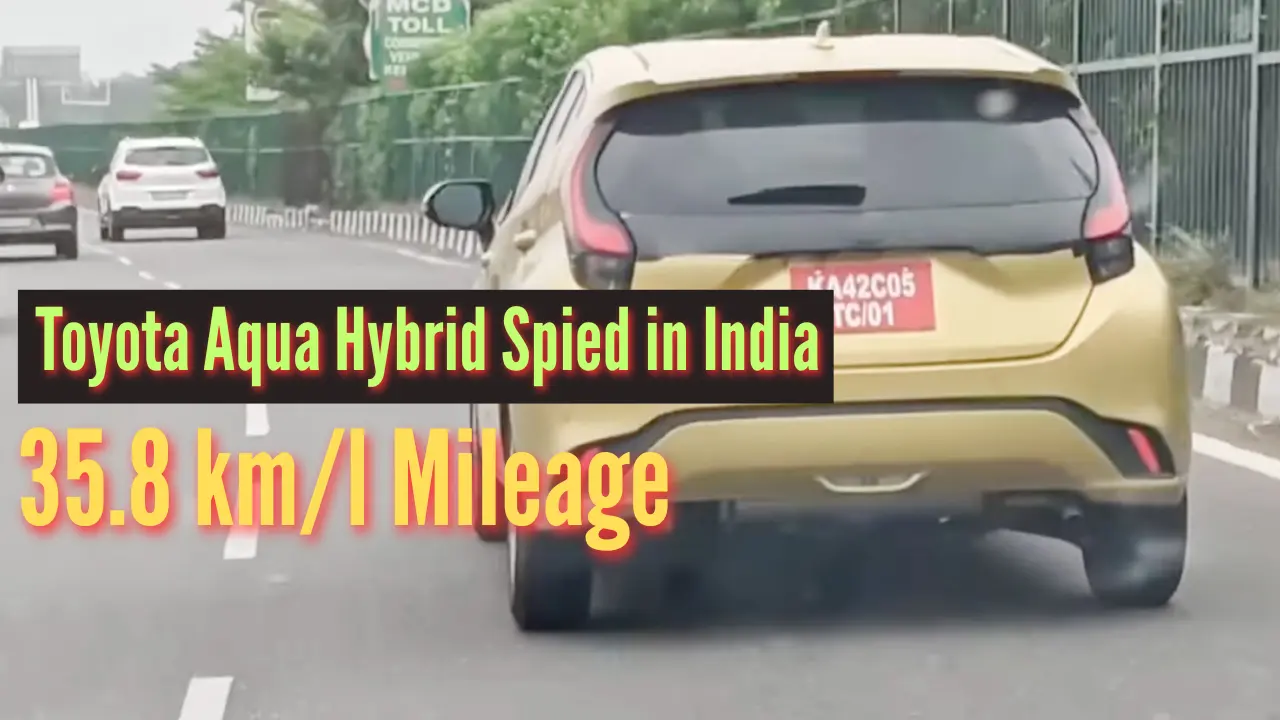The fuel-efficient Toyota Aqua hybrid has been caught red-handed during road tests across India, and honestly, it’s got us pretty excited about what the Japanese giant might be cooking up for our market.
Word on the street is that Toyota’s seriously considering the Aqua for India as part of their bigger hybrid push. And let’s be real – with India’s hybrid vehicle market projected to explode at a mind-boggling 34.81% CAGR through 2030, Toyota would be crazy not to jump on this bandwagon. That jaw-dropping 35.8 km/l mileage figure? In a country where we literally calculate our weekend plans based on petrol prices, this could be the hero we didn’t know we needed.
What Makes the Aqua Special
Look, we’ve driven our fair share of hybrids, but the second-gen Aqua isn’t just another eco-warrior trying too hard. Toyota’s actually gone and stuffed some genuinely impressive tech into this little guy. They’ve managed to cram in the world’s first high-output bipolar nickel-hydrogen battery system – fancy name aside, it basically means double the punch while letting you cruise on electric power for longer stretches.
The heart of the matter is a 1.5-litre three-cylinder Dynamic Force engine working hand-in-hand with Toyota’s tried-and-tested THS II hybrid system. Sure, 91 PS and 120 Nm might not set your pulse racing, but here’s the thing – that 35.8 km/l isn’t just marketing fluff. We’re talking about a genuine 20% bump in efficiency over the previous generation. That’s the kind of improvement that makes your wallet smile.
Design and Dimensions
At 4,050mm long, 1,695mm wide, and 1,485mm tall with a 2,600mm wheelbase, the Aqua’s got the proportions just right for Indian roads. Toyota’s been smart here – they’ve stretched the wheelbase by 50mm compared to the older model, which translates to more legroom for your backseat passengers and extra space for those inevitable shopping bags. Trust us, Indian families will appreciate this thoughtful touch.
Built on Toyota’s TNGA-B platform, this little hatchback gets a properly rigid body with a low center of gravity. The styling? Well, it’s quintessentially Toyota – clean lines, no unnecessary drama, and the kind of design that ages gracefully. LED headlamps and taillamps are standard kit, along with decent-looking 15-inch alloys that should handle our roads just fine.
Read Also: Skoda Kushaq vs Mahindra XUV 3XO: Which Compact SUV Offers Better Value?
Interior and Features
Step inside and you might be pleasantly surprised. For a compact car, Toyota’s really pulled out the stops here. The showstopper has to be that massive 10.5-inch touchscreen – and get this, it’s the first time Toyota’s put such a large display in any of their compact cars. The system’s pretty comprehensive with multiple connectivity options and voice recognition that actually works.
Here’s what else caught our attention:
- A proper leather-wrapped three-spoke steering wheel (feels premium)
- Automatic climate control (because manual AC is so 2010)
- Toyota Safety Sense 2.0 comes standard (more on this later)
- Toyota Teammate Advanced Park (yes, it parks itself!)
- Emergency power supply mode with AC 100V/1,500W outlet
That last feature’s actually brilliant – imagine using your car to power your home appliances during those inevitable power cuts. Your Aqua could literally brew your morning tea or charge your laptop. It’s like having a backup generator that also happens to get you to work every day.
Safety Package
Toyota hasn’t messed around with safety. The Aqua comes loaded with Toyota Safety Sense 2.0, and this isn’t just marketing speak. We’re talking about pre-collision systems smart enough to spot pedestrians and cyclists, even when they’re doing unpredictable things at intersections (which, let’s face it, happens a lot in India).
Full-speed radar cruise control, lane tracing assist, and parking support brake are all part of the package. But the real party trick is that advanced parking system – it handles steering, braking, acceleration, and gear changes all by itself. Just hit a button and watch your car become a parking ninja. Perfect for those tight Mumbai parking spots.
Market Context
The hybrid scene in India is absolutely buzzing right now. With 323,913 hybrid vehicles sold in FY2024 and projections hitting 1.73 million units by FY2030, there’s clearly a hunger for fuel-efficient alternatives. Toyota’s already in the game with the Camry Hybrid and Urban Cruiser Hyryder, so they know what works here.
Sure, the government’s FAME-II scheme isn’t as generous with hybrids as it is with pure EVs, but with fuel prices doing their usual roller-coaster act and emission norms getting tighter, hybrids are looking like the sensible middle ground. They’re the perfect “have your cake and eat it too” solution.
Expected Pricing
If Toyota does pull the trigger on an India launch, we’re looking at somewhere between ₹12.89-16.92 lakh (ex-showroom). That puts it squarely in premium hatchback territory, going toe-to-toe with the Maruti Baleno and Hyundai i20. The difference? Those extra kilometers per liter that could save you a small fortune over time.
The million-rupee question is whether Indian buyers will shell out extra for hybrid tech in a compact car. Given Toyota’s hybrid success story so far, we’re cautiously optimistic they might just crack this nut.
